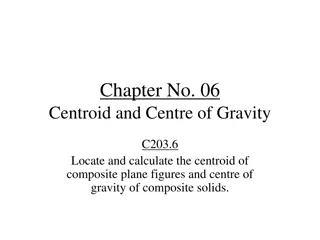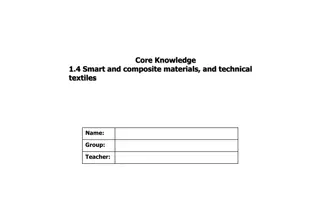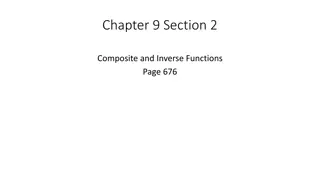Understanding Composite Functions in Mathematics
Composite functions in mathematics involve applying two functions in succession, yielding a new function known as the composite. By evaluating functions in a specific order and considering their ranges and domains, composite functions provide a powerful tool for mathematical analysis.
Download Presentation

Please find below an Image/Link to download the presentation.
The content on the website is provided AS IS for your information and personal use only. It may not be sold, licensed, or shared on other websites without obtaining consent from the author. Download presentation by click this link. If you encounter any issues during the download, it is possible that the publisher has removed the file from their server.
E N D
Presentation Transcript
10.3 Composite Functions = = + = + ( ) f x 4 ( ) g x 6 x x ( ) h x 5 x = ( ( )) f g x x ( x ) 6 4 6 x+ + = = = x ( ( ) g x ) 4 4 f How would you define composite functions? ( ) + 4 24 x Math30-1 1
Composition of Two Functions When two functions are applied in succession, the resulting function is called the composite of the two given functions. (g o f)(x) = g(f(x)) The range of f(x) becomes the domain of g(x). Evaluate f(x) then use the answer as the input for g(x). Notice: The function is evaluated from the inside to the outside. x is the input into the f function to get y y is the input into the g function to get z Math30-1 2
10.3 Function Composition 10.3 Function Composition = ( ) f x y ( ) = ( ) y f g x = ( ) g x y f ( ) = = ( ) y g f x ( ) f x y g Math30-1 3
= = + = + ( ) f x 4 ( ) g x 6 x x ( ) h x 5 x = ( ( )) h f x (4 ) h x ( ) = + 4 5 x 5 4 = + 4 5 x x , Math30-1 4
Evaluating a Composition of a Functions Given h(x) = 4x + 3, determine the following: a) (h h)(x) b) (h h)(-3) (h h)(x) = h(h(x)) = h(4(x) + 3) = h(4x + 3) (h h)(-3) = h(h(-3)) = h(4(-3) + 3) = h(-9) h(4x + 3) = 4(4x + 3) + 3 = 16x + 12 + 3 = 16x + 15 h(-9) = 4(-9) + 3 = -33 Note: (h h)(x) (hh)(x) (hh)(x) = h(x) xh(x) Math30-1 5
= = + ( ) h x 2 5 x 2 = ( ) g x 3 x ( ) f x 1 x Given Determine an expression in simplest form for ( 2 1 5 x ) = x ( ( )) h f x , 1 Why are there restrictions? ( ) = + ( )( ) ( ) k x 2 2 5 x = ( ) k x h g ( ( h f x ) ) ( = ( ) k x 1 ) h g ( x = ( ) k x 2 1 x x , 1 ) 2 = + ( ) k x 1 3 x ( ) = + ( ) k x 2 h x Math30-1 6
+ 2 ( ) 4 2 x x ( ) 4 f f = ( ) f x Using the function determine the value of f + 2 4 4 2 4 ( ) ( ) 4 = f f ( ) ( ) 4 ( ) = 10 f f f + 2 10 10 2 4 ( ) ( ) 4 = f f ( ) ( ) 4 = 13 f f Math30-1 7
= ( ) g x = ( ) f x log x 5x 5 Determine the expressions for h(x)= f(g(x)) and k(x) = g(f(x)) = = ( ) h x ( ( )) f g x ( ) k x ( ( )) g f x ( ) 5x ( ) h x = log ( ) k x = log x 5 5 5 = ( ) h x x = ( ) k x x The situation when f(g(x)) = g(f(x)) = x indicates that the original functions are inverses. Math30-1 8
Use the graph to determine the value of ( )(3) = = = + + (3) + (3) f g f g = ( ) f x y 0 ( 12) 12 ( ) ( ) 2 ( ) 4 = = g ( ) g x y g f = 12 Math30-1 9
Page 507 1a,c, 2a,c, 3c, 4a,d,e, 5b,c, 6, 7, 8, 11, 13, 14, 15, 17 C1, C2 Math30-1 10























